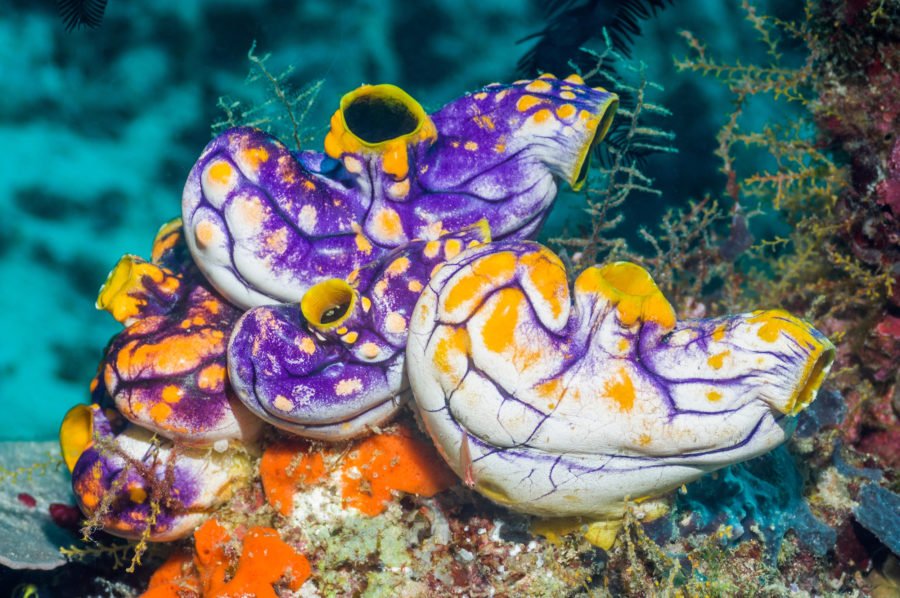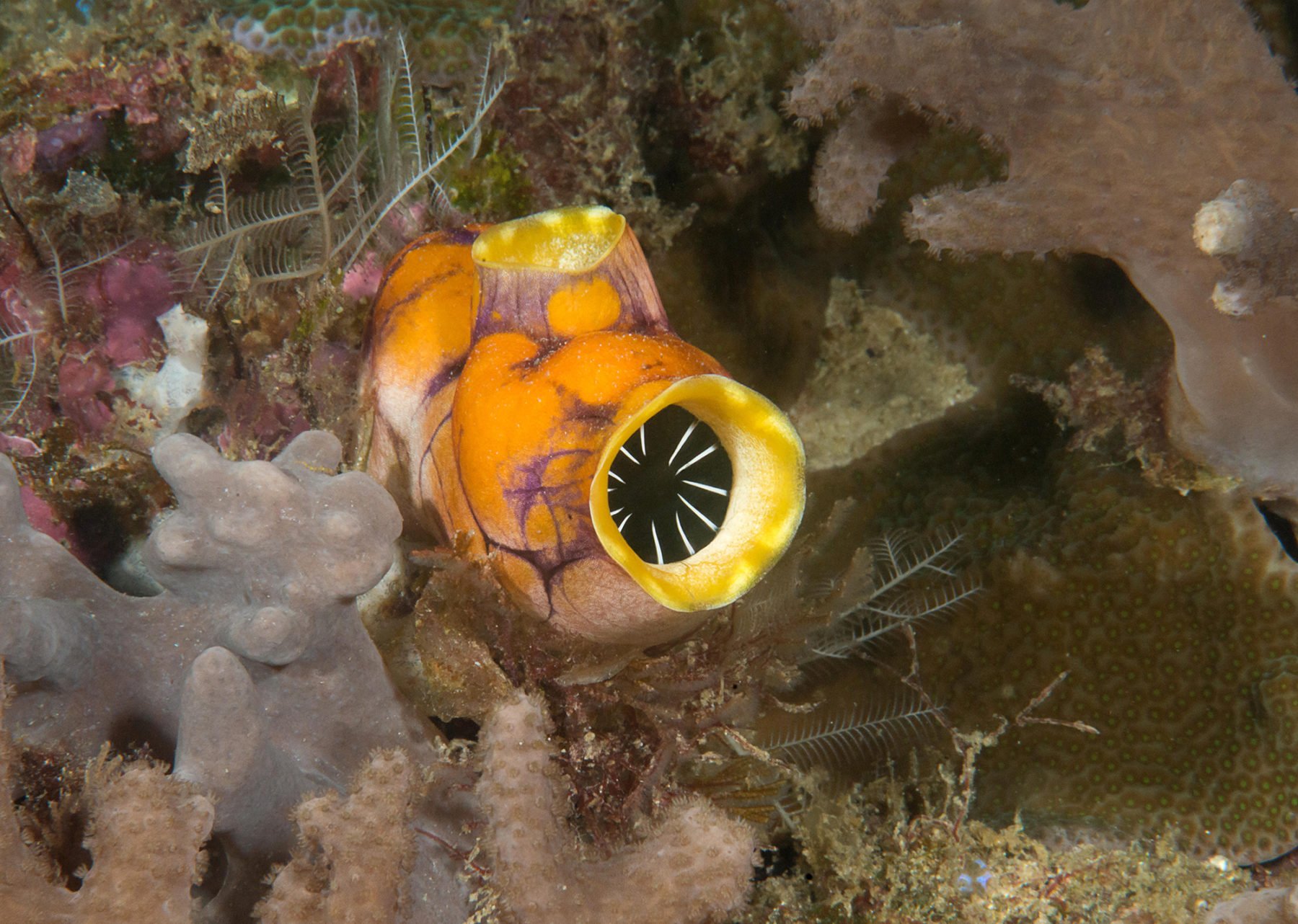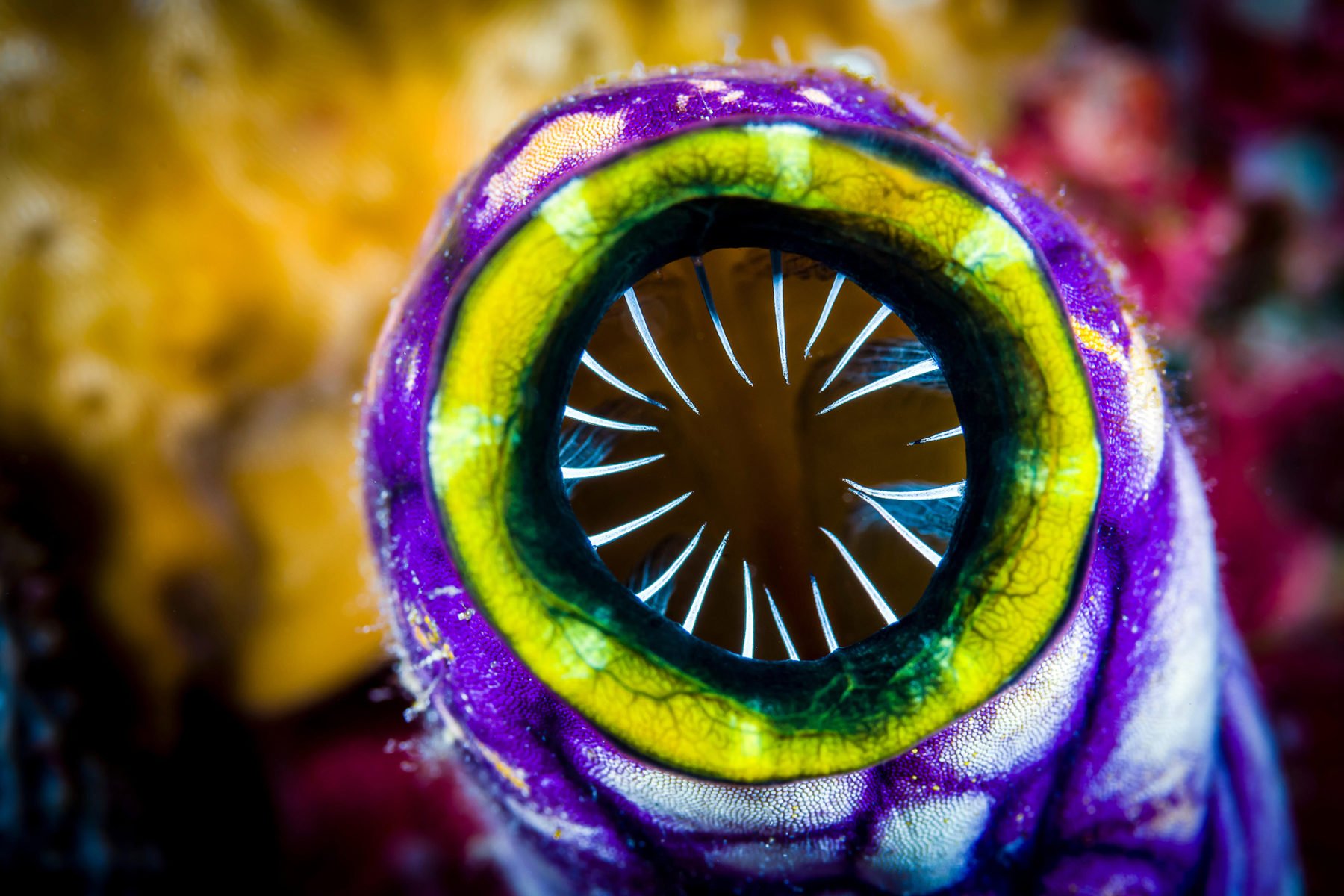The golden-mouth sea squirt is all kinds of nutty

Bec Crew
Bec Crew

The golden-mouth sea squirt is a beautifully coloured tunicate – a hollow-bodied marine invertebrate named for the distinctive ‘tunic’ that forms its exterior. (Arguably it’s more of a onesie, but tunic does sound more sophisticated.)
Also known as the ink-spot sea squirt, these strange critters are found in warm waters of northern Australia, from right up near Cape York and all along the Queensland coast, and in parts of South East Asia.
They tend to stick themselves to a hard surface and filter plankton and other microscopic organisms from the water using their large mouths, known technically as siphons. Like other tunicates, golden-mouth sea squirts have two siphons; water (and food) goes in one siphon and out the other one.
What’s really cool about sea squirts is their tube-like bodies provide a home for other lifeforms.
Algae and tiny hydroids (relatives of jellyfish) can accumulate inside, and this provides food for nudibranchs. The nudibranch Nembrotha lineolata is particularly fond of the golden-mouth sea squirt. So much so, it will sometimes lay its eggs right on it.
It all sounds rather cosy, and if I were a tiny sea creature looking for shelter, I’d definitely consider it, until I got up close and saw what’s inside:

Hm. Not sure about that. I might take my chances in the wide, open ocean, which is filled with ambush hunters, deadly boxers, and a whole lotta snot… Maybe a sea squirt shanty isn’t such a bad idea after all.

Okay nope, never mind. No.
The good news is those things aren’t actually teeth, they’re oral tentacles, which honestly doesn’t sound much better. But they’re just there to filter things out of the water like a sieve.
Sea squirts aren’t all scary gaping maws – they can also be hilariously cute.
While some species, like the golden-mouth sea squirt and these ghostly fellows, tend to be fairly solitary (or found in groups of two or three), others are ‘colonial’, as in, they hang out in large, tight-knit groups.
And depending on their particular patterns and shapes, they can look absolutely ridiculous.
I would 100% hang out with these guys:

